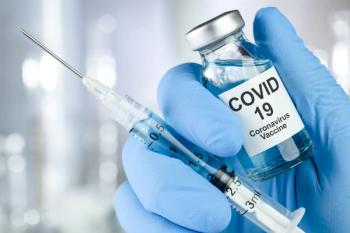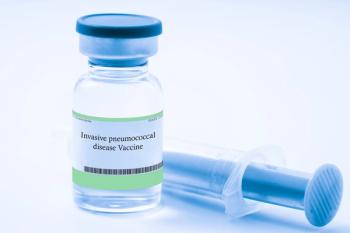
Following COVID-19 Pandemic, Cardiovascular Health Trends Suggest Increased Physical Activity
Key Takeaways
- Recreational physical activity increased significantly post-pandemic, driven by moderate-intensity exercise, indicating a beneficial lifestyle shift among US adults.
- Traditional cardiovascular risk factors remained stable, but COVID-19 infection poses long-term cardiovascular risks, especially for severe cases and those with pre-existing conditions.
US adults show an increase in recreational activity post-COVID-19, but lingering cardiovascular risks from infection highlight the need for ongoing health vigilance.
A recent analysis of cardiovascular health trends among US adults suggests a potentially beneficial lifestyle shift in the years following the peak of the COVID-19 pandemic, marked primarily by a significant increase in recreational physical activity. However, these findings arrive as other research emphasizes that the COVID-19 infection itself introduced a sustained, long-term threat to cardiovascular health, a crucial consideration for pharmacists counseling patients.1,2
"Most traditional cardiovascular risk factors remained stable after the pandemic, whereas recreational physical activity increased significantly, driven by moderate-intensity exercise," the study authors said.1 "These findings highlight the stability of CVD metrics and a potentially beneficial lifestyle shift."
Data from the National Health and Nutrition Examination Survey, comparing periods from March 2017 to early 2020 (pre-COVID-19) with August 2021 to August 2023 (post-COVID-19), found that most traditional cardiovascular risk factors remained stable. Metrics such as body mass index, total cholesterol, hemoglobin A1c, and the prevalence of self-reported hypertension, diabetes, and hyperlipidemia showed consistency between the two periods. While systolic blood pressure, uninsured rates, and limited healthcare access showed slight declines, these changes were not statistically significant after correction.1
The most notable change observed in US adults was the increase in leisure-time physical activity. Total recreational physical activity increased significantly after the pandemic, largely driven by moderate-intensity exercise. The median time spent on moderate-intensity activity rose sharply, which corresponds with a decline in the proportion of adults not meeting physical activity guidelines, falling from 60.7% before the pandemic to 45.2% afterward. Researchers hypothesize that this may reflect a beneficial lifestyle shift, possibly due to remote work and greater public awareness encouraging flexible, home-based exercise. Average sleep duration also increased slightly during the post-pandemic period.1
The Enduring Risk of Past COVID-19 Infection
While these lifestyle adaptations are promising, they must be contextualized by the known long-term cardiovascular risks associated with the COVID-19 infection itself. Studies supported by the National Institutes of Health (NIH) have confirmed that an infection from the first wave of COVID-19 appeared to significantly increase the risk of heart attack, stroke, and death for up to three years among unvaccinated individuals.2
For those infected early in the pandemic, the study found a doubled risk for cardiovascular events compared to people with no history of COVID-19. Furthermore, patients who experienced severe COVID-19 requiring hospitalization had nearly 4 times the risk. This heightened risk of a major cardiovascular event remained significantly elevated in each of the three follow-up years compared to controls, in some instances reaching a risk level comparable to that of having an established cardiovascular risk factor like type 2 diabetes. Some experts suggest that severe COVID-19 should now be considered an independent risk factor for cardiovascular disease.2
Inflammation and High-Risk Patients
The link between COVID-19 and long-term heart damage often stems from inflammation caused by the body’s immune response to the SARS-CoV-2 virus. Although the virus rarely infects the heart muscle directly, the resulting excessive inflammation, sometimes referred to as a "cytokine storm," can harm the cardiovascular system in several ways. This process can alter the heart’s electrical signals, potentially leading to arrhythmia, or affect the lining of the blood vessels, which raises the risk of blood clots, heart attack, or stroke.3
Pharmacists should note that patients with pre-existing cardiovascular issues, or those with underlying risk factors such as high blood pressure, diabetes, obesity, or high cholesterol, face the greatest risk of serious cardiac complications following COVID-19 infection. This is because people with cardiovascular disease are generally more prone to experiencing the excessive inflammation that drives heart damage.3
Even individuals who experienced mild cases of COVID-19 can still develop heart problems down the road. Symptoms that may signal lingering cardiac issues—a key component of long COVID—include chest pain, heart palpitations, fast heart rate, and shortness of breath with exercise.3
Although US adults generally maintained stable profiles concerning traditional risk factors like blood pressure and cholesterol during the later pandemic years and even demonstrated a positive trend toward more moderate physical activity, the added layer of cardiovascular danger posed by a prior COVID-19 infection underscores the necessity of continued surveillance and patient education. Pharmacists remain essential in encouraging sustained moderate physical activity and vigilance for long-term symptoms, especially among patients who suffered severe cases of COVID-19 or those with existing risk factors.1-3
"Cardiovascular risk profiles remained largely stable, but leisure activity increased significantly," the authors said.1 "Continued surveillance is warranted, and public health efforts should sustain access to flexible, home-based, and digital exercise options."
READ MORE:
Are you ready to elevate your pharmacy practice? Sign up today for our
REFERENCES
1. Yang H, Huang C, Sawano M, et al. Changes in Cardiovascular Risk Factors in US Adults Before and After the COVID-19 Pandemic. JACC Adv. Published online November 14, 2025. doi:10.1016/j.jacadv.2025.102352
2. First wave of COVID-19 increased risk of heart attack, stroke up to three years later. News release. National Institutes of Health. October 10, 2024. Accessed November 17, 2025. https://www.nih.gov/news-events/news-releases/first-wave-covid-19-increased-risk-heart-attack-stroke-three-years-later
3. Cleveland Clinic. Heart problems after COVID. January 25, 2024. Accessed November 17, 2025. https://my.clevelandclinic.org/health/articles/heart-problems-after-covid
Newsletter
Pharmacy practice is always changing. Stay ahead of the curve with the Drug Topics newsletter and get the latest drug information, industry trends, and patient care tips.













































































































































